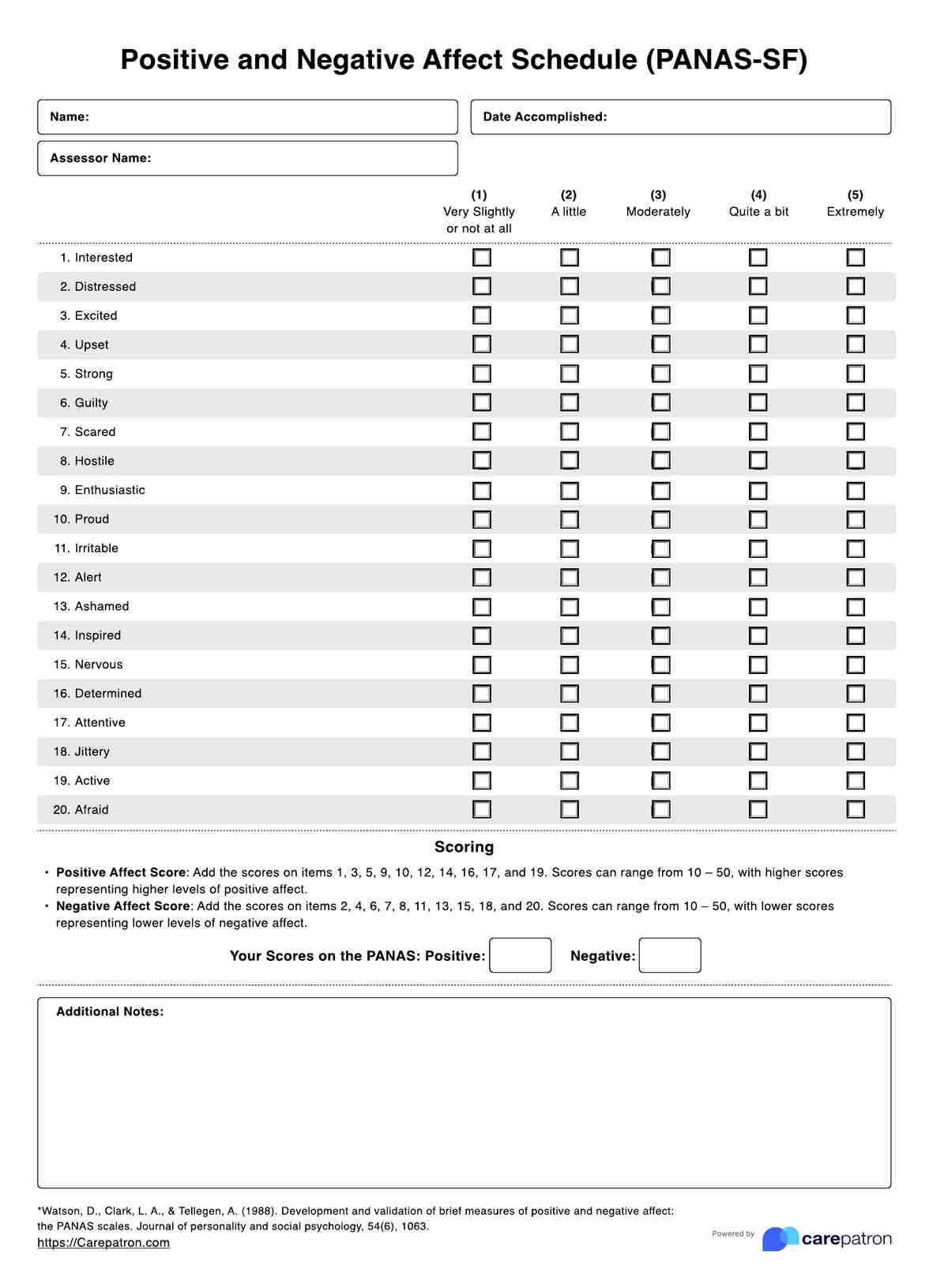Higher scores for positive means that they experience positive emotions frequently. Same for negative emotions. If you are using this in a clinical setting, you can use the results as a way to determine what could go into a treatment plan in terms of helping them in ways where they can reduce the patient’s frequency of experiencing negative emotions. Or, you can ask why they experience certain negative emotions frequently. Their responses can help you cover more ground and open up opportunities to use other assessments.

Positive and Negative Affect Schedule (PANAS-SF)
Measure your patient's experiences with positive and negative emotions using the Positive and Negative Affect Schedule (PANAS-SF) to help determine how you can help improve their overall well-being.
Positive and Negative Affect Schedule (PANAS-SF) Template
Commonly asked questions
No. This is not a diagnostic tool. However, it can be used as part of a comprehensive examination as one of the factors to help you decide if you will diagnose a certain patient with a certain disorder. It’s best to use this alongside other assessments to make better-informed decisions.
Yes, but always keep in mind the context of why you are using this in the first place. If your research is related to kids and their emotions, or if you are treating kids for mental health-related issues or disorders tied to their emotions, then you may definitely administer this test to them.
EHR and practice management software
Get started for free
*No credit card required
Free
$0/usd
Unlimited clients
Telehealth
1GB of storage
Client portal text
Automated billing and online payments











